 After dropping several spots in the rankings, Columbia University made national news when it announced in June that it will no longer share data with U.S. News and World Report for its Best Colleges guide. Columbia, like Yale Law School and others that have stopped cooperating in their guides, have argued the rankings were having too much influence (2024’s comes out next week) and not putting enough weight on the right things. Though college and graduate school rankings do strongly influence one’s decision to apply to and attend a school, what are U.S. News Best High Schools rankings intended for? Princeton High School (PHS), which was once ranked the 94th Best U.S. High School back in 2009 dropped to #534 in the latest rankings that came out this August. It has been in a steady decline in these rankings, with one exception, since at least 2017.
After dropping several spots in the rankings, Columbia University made national news when it announced in June that it will no longer share data with U.S. News and World Report for its Best Colleges guide. Columbia, like Yale Law School and others that have stopped cooperating in their guides, have argued the rankings were having too much influence (2024’s comes out next week) and not putting enough weight on the right things. Though college and graduate school rankings do strongly influence one’s decision to apply to and attend a school, what are U.S. News Best High Schools rankings intended for? Princeton High School (PHS), which was once ranked the 94th Best U.S. High School back in 2009 dropped to #534 in the latest rankings that came out this August. It has been in a steady decline in these rankings, with one exception, since at least 2017.
For colleges, U.S. News and World Report changed its methodology in May, in reaction to some of the criticism. This included gathering data not just from the colleges directly but from public resources as well. For high schools, all data used to determine the rankings is from 3rd parties, such as a U.S. Department of Education website, which updates basic demographic and enrollment data annually. It also utilizes state standardized assessment data and information from College Board and International Baccalaureate. Does this make the high school rankings more accurate? More importantly, do the people of Princeton or those considering moving here really care?
THE PEOPLE’S PERSPECTIVES
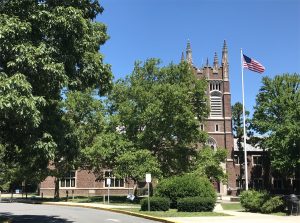 “It’s not what the school system is worth, it’s what you do with the school system that makes you worth something,” states Martin Bendersky. He has lived in Princeton for 32 years but raised his daughter, who has found professional success, through the nearby Lawrence school system.
“It’s not what the school system is worth, it’s what you do with the school system that makes you worth something,” states Martin Bendersky. He has lived in Princeton for 32 years but raised his daughter, who has found professional success, through the nearby Lawrence school system.
Bendersky says he does not really care about his home value, as he intends to live the rest of his years there, and he generally finds rankings to be “just a number.” A local mother with children at Community Park School feels similarly, citing concern that a focus on the rankings just puts more pressure on kids.
“I didn’t look at the rankings when moving here. Schools are based on zip codes so I knew, in this affluent area, the schools would be good, or be good enough.”
Is good enough, OK? Not for everyone that’s chosen to move here. Local Facebook groups include numerous concerned comments from parents worried about their home values and the quality of education for their children. One such parent, Christine Ritchie, who has 9th and 11thgraders at PHS (with a 6thgrader in Cranbury) moved to the area for Princeton High School in 2021 and is alarmed about the already decreased rankings since she arrived.
“It does tell a story and especially a trending story. I don’t think you can completely reengineer your district or change how you’re governing to focus on the rankings, but I believe they do show a trend. The fact the rankings in Princeton have gone down – and not just 1 or 2 but 10, 50, 100 a year – is pretty material,” says Ritchie. “We looked at Hopewell, but when we compared the rankings, it didn’t look like the right district for us, the rankings weren’t good enough. That’s where we made a deliberate choice. We wanted to be in Princeton, but couldn’t find anything, so we’re in Cranbury. But we were focused on Princeton because of the rankings and all the things we read about the district. If I knew everything about Princeton I know now, I wouldn’t have been so focused on buying here.”
Another parent, father of 3 daughters with the oldest in 4th grade at Princeton Charter School, does not intend to send his girls to Princeton High School due to the latest statistics and happenings. “At the high school, rankings definitely matter,” he concludes. “I’m from the Trenton school system, so this is an upgrade. But I worry, I don’t know how to fix it.”
MORE TO THE STORY
 If looking just across NJ, PHS is ranked 26th in the U.S. News guide, with local schools West-Windsor Plainsboro (WW-P) High Schools North and South coming in above (at 17 and 20, respectively). According to the 2023 Niche Best Schools Report (which came out Sept. 2022), another resource that profiles and ranks schools across the U.S., PHS is the 12th Best High School in NJ, above both WW-P schools. It is important to note that as an overall district, Princeton Public Schools rank even higher on Niche, as the #3 Best School District in New Jersey.
If looking just across NJ, PHS is ranked 26th in the U.S. News guide, with local schools West-Windsor Plainsboro (WW-P) High Schools North and South coming in above (at 17 and 20, respectively). According to the 2023 Niche Best Schools Report (which came out Sept. 2022), another resource that profiles and ranks schools across the U.S., PHS is the 12th Best High School in NJ, above both WW-P schools. It is important to note that as an overall district, Princeton Public Schools rank even higher on Niche, as the #3 Best School District in New Jersey.
“Niche named Princeton High School the top high school in Mercer County [of which there are 10 traditional public high schools] and the top non-magnet (open admissions) high school in the state,” responds Princeton Public Schools Board of Education President Dafna Kendal. With regards to the U.S. News guide, she adds, “There are so many reasons for the changes. One of the biggest reasons being that there are so many more charter/magnet schools than in 2009. 40% of the score has nothing to do with state assessments, which aren’t comparable across the country, and the overall subjectiveness of the rankings in general. We offer rigorous classes in all subject areas, 31 AP classes, independent studies, a world class fine arts program, all while serving students of a diverse student body.”
PHS has long been known for its rigor and variety of offerings, so that likely hasn’t changed too much. But the school did have 7.5% more students last year than it did in 2009. The diversity of Princeton’s schools, where 9% are described in the U.S. News guide as economically disadvantaged, came up with several of the residents we spoke to as well. Some wondered whether that factors in a positive or negative way. U.S. News worked with a research firm to score the schools, citing its methodology does factor in diversity and much more.
THE U.S. NEWS METHODOLOGY
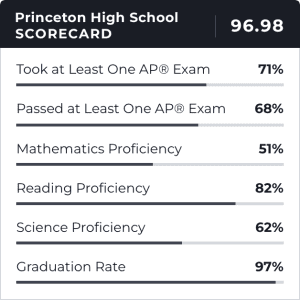
“A great high school educates all students from different social and economic backgrounds, exposing them to challenging coursework on the path to graduation. The highest ranked U.S. public schools in U.S. News & World Report’s 2023-2024 Best High Schools rankings are those whose students demonstrated outstanding outcomes above expectations in math, reading and science state assessments, earned qualifying scores in an array of college-level exams, and graduated in high proportions,” the website explains.
The guide cites six ranking indicators used to score the schools:
- College Readiness Index (CRI), based on the proportion of 12th grade students who took and earned a qualifying score on at least one Advanced Placement or International Baccalaureate exam (30% of ranking)
- State assessment proficiency, based on aggregated scores on state assessments that students may be required to pass for graduation (20%)
- State assessment performance, based on whether performance on state assessments exceeded expectations given the school’s proportion of underserved students (20%)
- Underserved student performance, based on how Black, Hispanic and low-income students performed on state assessments compared with those who are not underserved in the state (10%)
- College curriculum breadth, based on proportions of 12th grade students who took and earned a qualifying score on AP and/or IB exams in multiple content areas (10%)
- Graduation rate, based on the proportion of students who entered ninth grade in 2017-2018 and graduated four years later (10%)
OTHER FACTORS TO CONSIDER
Prior to 2019, U.S. News solely relied on the CRI. That year, it reformulated to include the six factors above. The outlet also clarifies that while the details and weight of each of the six measuring tools remains the same since 2019, the pandemic caused a shift in how three of them are calculated. Does this explain the 440-spot drop from 2009?
“Because U.S. News & World Report completely revamped its methodology in 2019, rankings from earlier editions are not comparable to those from 2019, 2020, 2021, 2022 and 2023-2024,” explains Dr. Carol Kelley, superintendent of Princeton Public School District. In 2019, PHS was #332, down to #356 in 2020, to #703 in 2021, #490 last year, and #534 for 2023. “While many people rely on published high school rankings, it is not a full measure of our success. Criteria varies for each publication making the lists somewhat subjective. Rather, it is our rigorous and innovative programming, our dedicated staff, and the high-quality educational experiences we provide to students that continues to keep Princeton High School competitive as compared to other high schools in New Jersey and across the nation.”
Everyone we spoke to does agree, high school rankings are only one barometer in determining the quality of a school. One resident, who has lived in Princeton for 62 years, said she thinks Princeton teenagers these days are rude and not well-spoken, so she wasn’t surprised to learn of a drop, but she also blames the deterioration on parents.
For others, while weighing the rankings against reputation, first-hand experiences and future success are valuable, there is still concern about what a large drop in ranking might signify.
 “These rankings seem to be against the reputation of power schools. I’m very surprised,” SherAli Tareen adds. He has lived here with his family for 5 years and plans to send his 3-year-old to Princeton’s public schools beginning next year. “It’s all about the methodology of the rankings, but this seems like a large shift. It’s going to have an impact on what college you go to, and that affects the rest of your life.”
“These rankings seem to be against the reputation of power schools. I’m very surprised,” SherAli Tareen adds. He has lived here with his family for 5 years and plans to send his 3-year-old to Princeton’s public schools beginning next year. “It’s all about the methodology of the rankings, but this seems like a large shift. It’s going to have an impact on what college you go to, and that affects the rest of your life.”
The Niche Best High School rankings for 2024 are due out later this month. We’ll let you know if those show any trends. There are a lot of eyes focused on what will happen at Princeton High School, since the removal of Frank Chmiel as principal last year and numerous concerns that were raised by parents. School opened last week with a new principal, Dr. Cecilia Birge, at the helm. Will this lead to any changes, perhaps higher rankings? Time will tell.
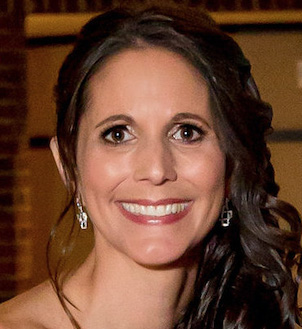
Lisa Jacknow spent years working in national and local news in and around New York City before moving to Princeton. Working as both a TV producer and news reporter, Lisa came to this area to focus on the local news of Mercer County at WZBN-TV. In recent years, she got immersed in the Princeton community by serving leadership roles at local schools in addition to volunteering for other local non-profits. In her free time, Lisa loves to spend time with her family, play tennis, sing and play the piano. A graduate of the S. I. Newhouse School of Public Communications at Syracuse University, Lisa was raised just north of Boston, Massachusetts but has lived in the tri-state area since college. She is excited to be Editor and head writer for Princeton Perspectives!

 Multiple days of humid summer weather that reached above 90 degrees. Bursts of torrential rainstorms. Tornado warnings and watches. Whether you believe this is climate change or not, this is extreme weather, and it is weather that has been hitting New Jersey this summer. Scientists and over 175 nations worldwide agree that there are things that can be done to slow down or reverse the extreme changes in weather and better protect our environment. Do you?
Multiple days of humid summer weather that reached above 90 degrees. Bursts of torrential rainstorms. Tornado warnings and watches. Whether you believe this is climate change or not, this is extreme weather, and it is weather that has been hitting New Jersey this summer. Scientists and over 175 nations worldwide agree that there are things that can be done to slow down or reverse the extreme changes in weather and better protect our environment. Do you?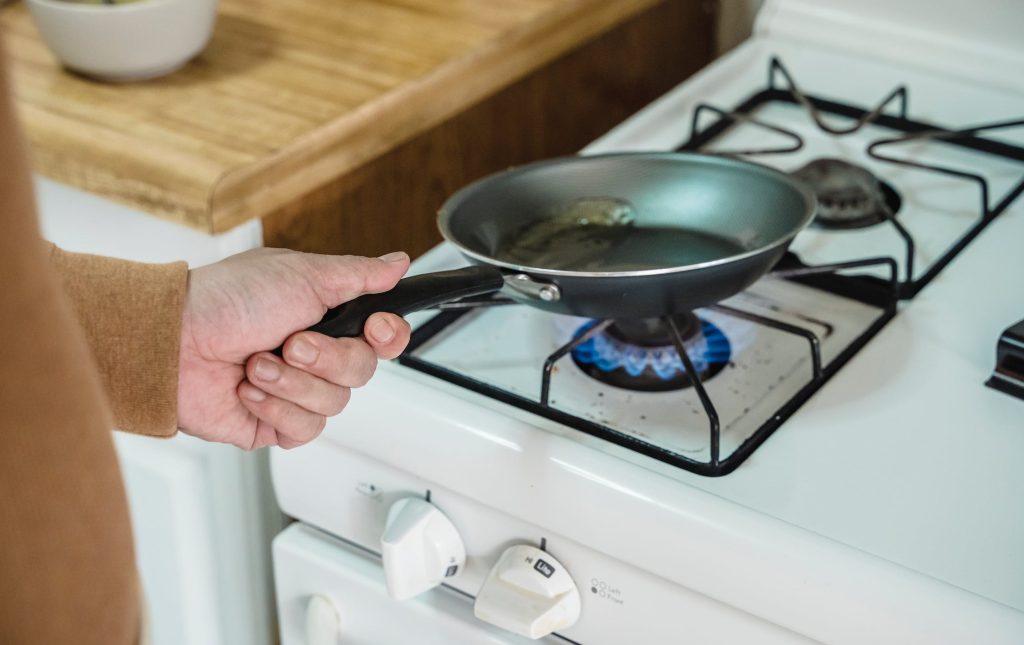 New Jersey Governor Phil Murphy wants to move away from fossil fuels. To move forward in this effort, the New Jersey Board of Public Utilities (BPU) voted last month to ask utility companies in NJ to offer incentives for customers that make the switch from gas stoves. People quickly assumed that meant homeowners would be forced to replace their existing ones, and pizza parlors would have to get new ovens as well, but both were quickly dismissed as rumors. The reality is that the BPU vote hopes to encourage many to change their ranges to electric, but not require them to.
New Jersey Governor Phil Murphy wants to move away from fossil fuels. To move forward in this effort, the New Jersey Board of Public Utilities (BPU) voted last month to ask utility companies in NJ to offer incentives for customers that make the switch from gas stoves. People quickly assumed that meant homeowners would be forced to replace their existing ones, and pizza parlors would have to get new ovens as well, but both were quickly dismissed as rumors. The reality is that the BPU vote hopes to encourage many to change their ranges to electric, but not require them to.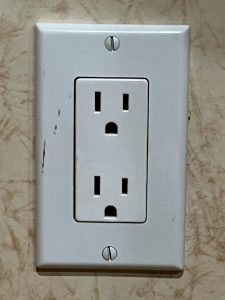 Let’s start with your home energy supply. Most people do not realize that you can have a say in where it comes from and help control your own costs. The actual lines, pipes and other equipment that bring energy into the majority of homes in Mercer County are owned and controlled by Public Service Enterprise Group (PSE&G) and Jersey Central Power & Light (JCP&L). For most, they are the supplier of the electric power and natural gas as well, but simply because they are the distributor no longer means they have to provide the energy to you. New Jersey law allows for owners to decide whom they want their energy supply to come from to allow for more open competition.
Let’s start with your home energy supply. Most people do not realize that you can have a say in where it comes from and help control your own costs. The actual lines, pipes and other equipment that bring energy into the majority of homes in Mercer County are owned and controlled by Public Service Enterprise Group (PSE&G) and Jersey Central Power & Light (JCP&L). For most, they are the supplier of the electric power and natural gas as well, but simply because they are the distributor no longer means they have to provide the energy to you. New Jersey law allows for owners to decide whom they want their energy supply to come from to allow for more open competition. Between pricing and options, there’s a lot to consider. If you prefer to start simpler, there are ways that you can conserve energy by delving into how you utilize your energy instead of where your it comes from. Home energy assessments, which bring a certified energy expert into your home to educate you on product options and provide simple product changes, could cost you nothing. Yet they could bring great rewards to both your pocketbook and the environment. The advice could be as simple as turning down your thermostat when you leave or switching your bulbs to LED, which use 90% less electricity than older incandescent bulbs. Replacing your existing showerhead with a low-flow option could save you 25-60% on water, according to the U.S. Department of Energy.
Between pricing and options, there’s a lot to consider. If you prefer to start simpler, there are ways that you can conserve energy by delving into how you utilize your energy instead of where your it comes from. Home energy assessments, which bring a certified energy expert into your home to educate you on product options and provide simple product changes, could cost you nothing. Yet they could bring great rewards to both your pocketbook and the environment. The advice could be as simple as turning down your thermostat when you leave or switching your bulbs to LED, which use 90% less electricity than older incandescent bulbs. Replacing your existing showerhead with a low-flow option could save you 25-60% on water, according to the U.S. Department of Energy. If you want to change just one thing, and choose to get a new appliance, you will immediately make a positive impact on the environment and your monthly bills. In 2023, there are very few appliances sold new that are not ENERGY STAR® certified. You have likely seen the logo on appliances you own or in the store. It symbolizes that the U.S. Environmental Protection Agency (EPA) has partnered with the manufacturer to ensure the appliance is more energy efficient.
If you want to change just one thing, and choose to get a new appliance, you will immediately make a positive impact on the environment and your monthly bills. In 2023, there are very few appliances sold new that are not ENERGY STAR® certified. You have likely seen the logo on appliances you own or in the store. It symbolizes that the U.S. Environmental Protection Agency (EPA) has partnered with the manufacturer to ensure the appliance is more energy efficient. -Conserve water. Energy is used to pump and treat the water you use, so simply turning off the water when you brush your teeth or getting your leaky faucet fixed promptly can reduce pollution and save you money. A leak of one drip every second can cost you up to $35 per year.
-Conserve water. Energy is used to pump and treat the water you use, so simply turning off the water when you brush your teeth or getting your leaky faucet fixed promptly can reduce pollution and save you money. A leak of one drip every second can cost you up to $35 per year.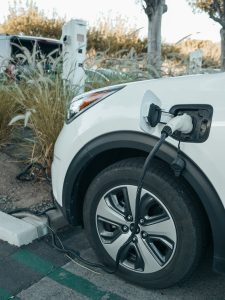 This year in New Jersey, there are nearly 10 electric vehicles per every 1,000 residents. The first mass-produced hybrid vehicle, the Toyota Prius, first sparked people’s interest in a more environmentally friendly car when it came onto the U.S. market in 2001. Since then, peoples’ desires, government regulations and manufacturing opportunities have enabled a growing market. In 2020, New Jersey Governor Phil Murphy signed legislation he hoped would help to reduce emissions in the Garden State, with a goal of having 330,000 electric vehicles (EVs) registered to New Jerseyans by 2025. We wrote about the state’s new climate goals in the article
This year in New Jersey, there are nearly 10 electric vehicles per every 1,000 residents. The first mass-produced hybrid vehicle, the Toyota Prius, first sparked people’s interest in a more environmentally friendly car when it came onto the U.S. market in 2001. Since then, peoples’ desires, government regulations and manufacturing opportunities have enabled a growing market. In 2020, New Jersey Governor Phil Murphy signed legislation he hoped would help to reduce emissions in the Garden State, with a goal of having 330,000 electric vehicles (EVs) registered to New Jerseyans by 2025. We wrote about the state’s new climate goals in the article 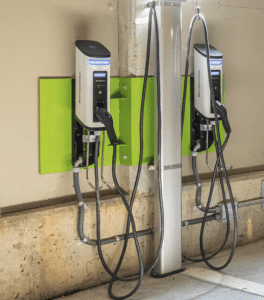 The Township of Robbinsville and The College of New Jersey both took advantage of incentives to transition part of their fleets to EV, and multi-family complexes in Princeton, Lawrence, East Windsor, West Windsor and Robbinsville have used state incentives to install Level-2 charging stations for residents and guests. But a true switch to all-electric vehicles requires everyone to want and be able to do so.
The Township of Robbinsville and The College of New Jersey both took advantage of incentives to transition part of their fleets to EV, and multi-family complexes in Princeton, Lawrence, East Windsor, West Windsor and Robbinsville have used state incentives to install Level-2 charging stations for residents and guests. But a true switch to all-electric vehicles requires everyone to want and be able to do so.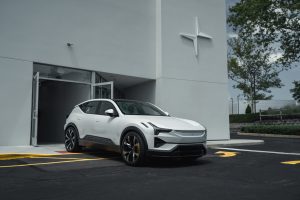 July data shows that Tesla sales make up approximately 60% of the U.S. market. The other 40% are comprised of 20+ car brands including Polestar, Mercedes Benz, Audi, and Genesis.
July data shows that Tesla sales make up approximately 60% of the U.S. market. The other 40% are comprised of 20+ car brands including Polestar, Mercedes Benz, Audi, and Genesis.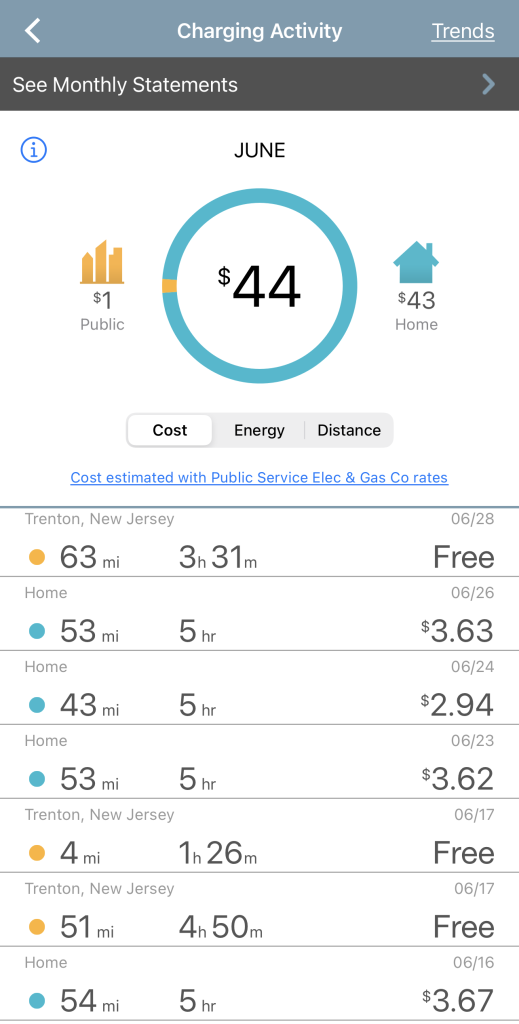 A quick look at his phone app shows the benefits Long is getting from his electric car, spending just $44 last month on electric energy rather than the hundreds many spend a month on gas. He says it takes just two days for someone to get comfortable and utilizing the interfaces electric cars have installed, such as the Google android system in the Polestar, which indicates arrival time and the charge you will need to get there. And there are a variety of charging options for these vehicles. Level 1, using a 120-volt household outlet, will likely take about 30 hours, while Level 2, alternating current (AC), decreases that to 4-6 hours and the improved direct current (DC) fast charging lowers that to around 30 minutes. The improved technology hopes to decrease or eliminate what’s called range anxiety, the fear of getting to/from your destination with enough charge – and something that prevents many from making the change.
A quick look at his phone app shows the benefits Long is getting from his electric car, spending just $44 last month on electric energy rather than the hundreds many spend a month on gas. He says it takes just two days for someone to get comfortable and utilizing the interfaces electric cars have installed, such as the Google android system in the Polestar, which indicates arrival time and the charge you will need to get there. And there are a variety of charging options for these vehicles. Level 1, using a 120-volt household outlet, will likely take about 30 hours, while Level 2, alternating current (AC), decreases that to 4-6 hours and the improved direct current (DC) fast charging lowers that to around 30 minutes. The improved technology hopes to decrease or eliminate what’s called range anxiety, the fear of getting to/from your destination with enough charge – and something that prevents many from making the change.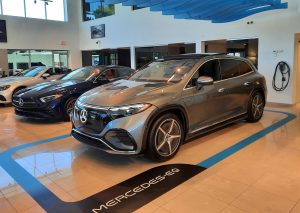 The EQ is one of five models currently offered by Mercedes-Benz USA. These have been available for sale for around two years and already comprise approximately 10% of new vehicle sales at Mercedes-Benz of Princeton, also along Route 1 in Lawrenceville. The trend Greces is seeing of locals not giving up their gasoline-powered cars is one we’re hearing on the streets as well.
The EQ is one of five models currently offered by Mercedes-Benz USA. These have been available for sale for around two years and already comprise approximately 10% of new vehicle sales at Mercedes-Benz of Princeton, also along Route 1 in Lawrenceville. The trend Greces is seeing of locals not giving up their gasoline-powered cars is one we’re hearing on the streets as well.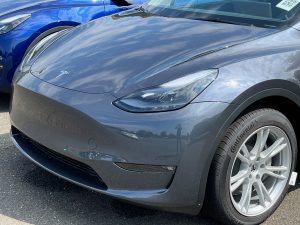 When it comes to public charging stations, Tesla has the most nationwide. However, all other EV brands are on a system that’s different than Tesla. While some can utilize certain Tesla stations through an adapter, overall use will soon be even easier. In 2025, Volvo and Polestar will be switching to Tesla’s charging infrastructure. As soon as next year, other brands, including Mercedes-Benz, are switching to Tesla charging, too, once connectors, plugs and payment systems are all adapted and integrated. The industry is hoping this will decrease the range anxiety and help people make the EV switch.
When it comes to public charging stations, Tesla has the most nationwide. However, all other EV brands are on a system that’s different than Tesla. While some can utilize certain Tesla stations through an adapter, overall use will soon be even easier. In 2025, Volvo and Polestar will be switching to Tesla’s charging infrastructure. As soon as next year, other brands, including Mercedes-Benz, are switching to Tesla charging, too, once connectors, plugs and payment systems are all adapted and integrated. The industry is hoping this will decrease the range anxiety and help people make the EV switch.
 Adults know that adulting can take a lot out of you. Being responsible and mature, working a fulltime job, paying your bills and keeping your home clean are necessary of course. But have you ever thought about how much happier you are when you also grant yourself time to enjoy life a little? July 8th was
Adults know that adulting can take a lot out of you. Being responsible and mature, working a fulltime job, paying your bills and keeping your home clean are necessary of course. But have you ever thought about how much happier you are when you also grant yourself time to enjoy life a little? July 8th was  Do you remember the first day you learned to ride a two-wheeler? Though many local roadways are working to make safe spaces to travel by bike, there are an abundance of bike paths to get you moving away from the traffic. The more than 70-miles of canal and trailways that make up
Do you remember the first day you learned to ride a two-wheeler? Though many local roadways are working to make safe spaces to travel by bike, there are an abundance of bike paths to get you moving away from the traffic. The more than 70-miles of canal and trailways that make up  As a kid you might have taken a local donkey for a walk, but now you have the opportunity to also walk an alpaca.
As a kid you might have taken a local donkey for a walk, but now you have the opportunity to also walk an alpaca.  Did you know that in 2020, sport climbing became part of the Summer Olympics? Clearly, the act of climbing builds intense strength, but a recent
Did you know that in 2020, sport climbing became part of the Summer Olympics? Clearly, the act of climbing builds intense strength, but a recent 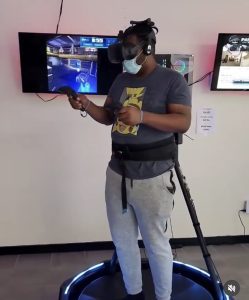 Virtual Reality (VR) systems can truly make you feel like you are climbing or rappelling somewhere similar to Ralph Stover or walking around in a feels-like-real setting of your favorite video game, all from a simple room. While enthusiasts may have their own systems at home, places like
Virtual Reality (VR) systems can truly make you feel like you are climbing or rappelling somewhere similar to Ralph Stover or walking around in a feels-like-real setting of your favorite video game, all from a simple room. While enthusiasts may have their own systems at home, places like  What is your go-to comfort food? We all have one, that meal that takes away some of our worries and just makes us feel at home. As expected, the top choices vary from state to state. An
What is your go-to comfort food? We all have one, that meal that takes away some of our worries and just makes us feel at home. As expected, the top choices vary from state to state. An  Lasagna is one of those meals that most people like, can be adapted to certain dietary needs and can sometimes last to fill a need for more than one meal. This year, there are 1,000 chefs cooking up lasagnas for neighbors across New Jersey. They are rarely professionals, but simply someone who is willing to bake up an extra meal in their kitchen and deliver it to someone going through a medical trauma, who is having trouble making ends meet, or who simply is too stressed out between work and home life. In Mercer County, 50 volunteer chefs are currently helping out, and so far, this year, around 300 meals have been delivered feeding 1,200 people.
Lasagna is one of those meals that most people like, can be adapted to certain dietary needs and can sometimes last to fill a need for more than one meal. This year, there are 1,000 chefs cooking up lasagnas for neighbors across New Jersey. They are rarely professionals, but simply someone who is willing to bake up an extra meal in their kitchen and deliver it to someone going through a medical trauma, who is having trouble making ends meet, or who simply is too stressed out between work and home life. In Mercer County, 50 volunteer chefs are currently helping out, and so far, this year, around 300 meals have been delivered feeding 1,200 people. Since Menn began posting in 2020 on Facebook asking who needed help and offering up lasagnas, more than 350,000 hot meals have been delivered. Staying true to its roots, the organization mostly still utilizes the social media platform and its website to spread the word. So, if you want to
Since Menn began posting in 2020 on Facebook asking who needed help and offering up lasagnas, more than 350,000 hot meals have been delivered. Staying true to its roots, the organization mostly still utilizes the social media platform and its website to spread the word. So, if you want to 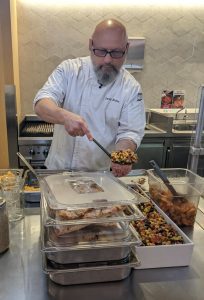

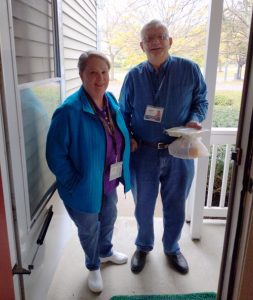 It is a sad reality that Lasagna Love and Share My Meals alone cannot meet the needs of the community. Decades before these organizations began, another was started to not only help older and homebound adults get the nourishment they need, but to also provide them with a little company.
It is a sad reality that Lasagna Love and Share My Meals alone cannot meet the needs of the community. Decades before these organizations began, another was started to not only help older and homebound adults get the nourishment they need, but to also provide them with a little company.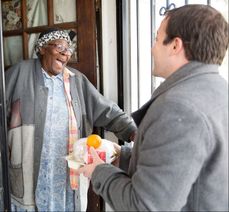 “We are also able to provide a second daily cold meal, as well as additional weekend meals on Fridays,” Englezos adds. “In addition, we provide fresh fruit and vegetables in the summer months, monthly deliveries of non-perishable food items so participants can have a ‘little extra’ in their homes, informational materials on relevant topics of interest such as proper nutrition, and monthly pet food bags tailored to the specific needs of their pets.”
“We are also able to provide a second daily cold meal, as well as additional weekend meals on Fridays,” Englezos adds. “In addition, we provide fresh fruit and vegetables in the summer months, monthly deliveries of non-perishable food items so participants can have a ‘little extra’ in their homes, informational materials on relevant topics of interest such as proper nutrition, and monthly pet food bags tailored to the specific needs of their pets.”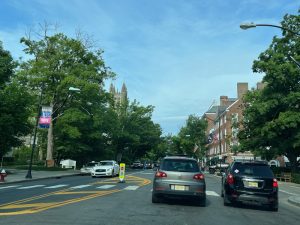 One of the things that attracts people to Princeton is its diversity. There are people of many races, nationalities, religions, socioeconomic levels and varying degrees of accomplishment. Princeton has long time residents, newcomers and people that are passing through. Some people drive, some ride bikes and others walk. In addition to residents, there are businesses, the municipality and visitors that may all have different interests. Quite often, there are bound to be a variety of opinions.
One of the things that attracts people to Princeton is its diversity. There are people of many races, nationalities, religions, socioeconomic levels and varying degrees of accomplishment. Princeton has long time residents, newcomers and people that are passing through. Some people drive, some ride bikes and others walk. In addition to residents, there are businesses, the municipality and visitors that may all have different interests. Quite often, there are bound to be a variety of opinions.